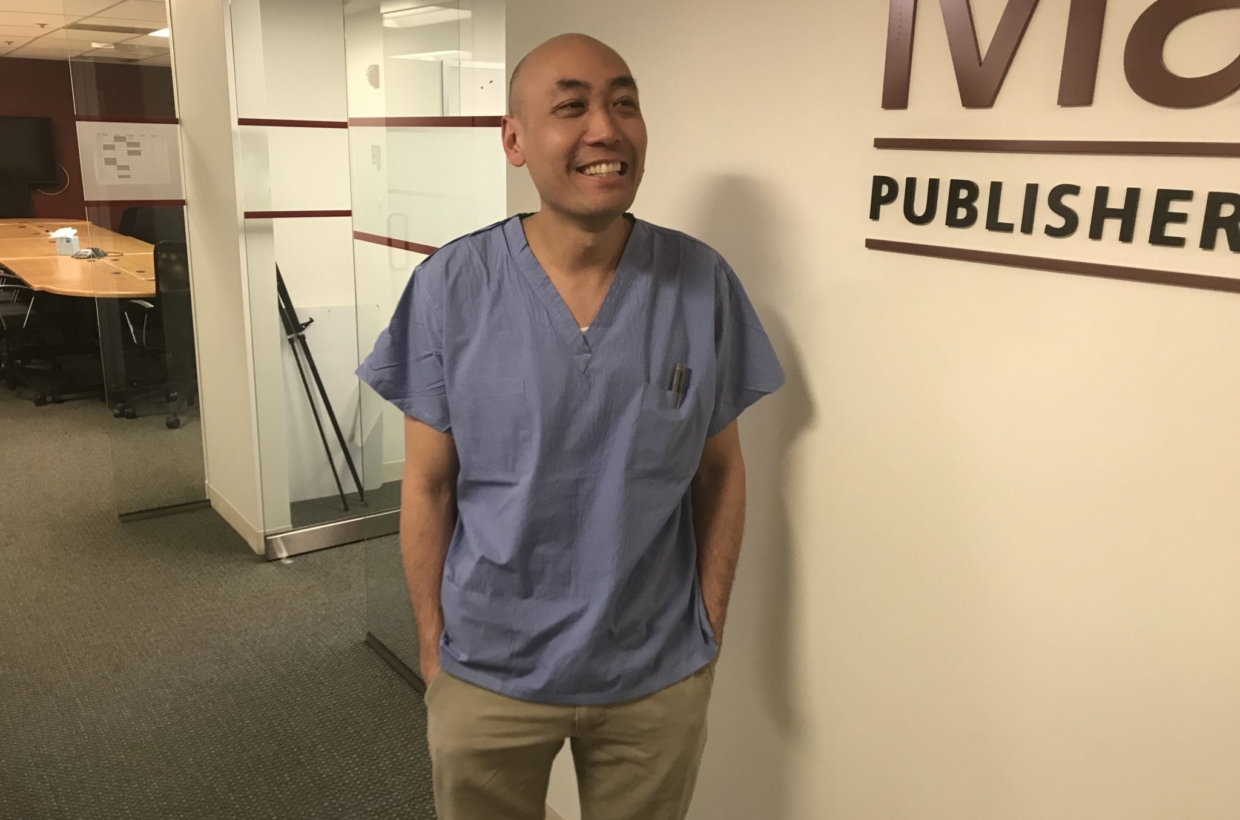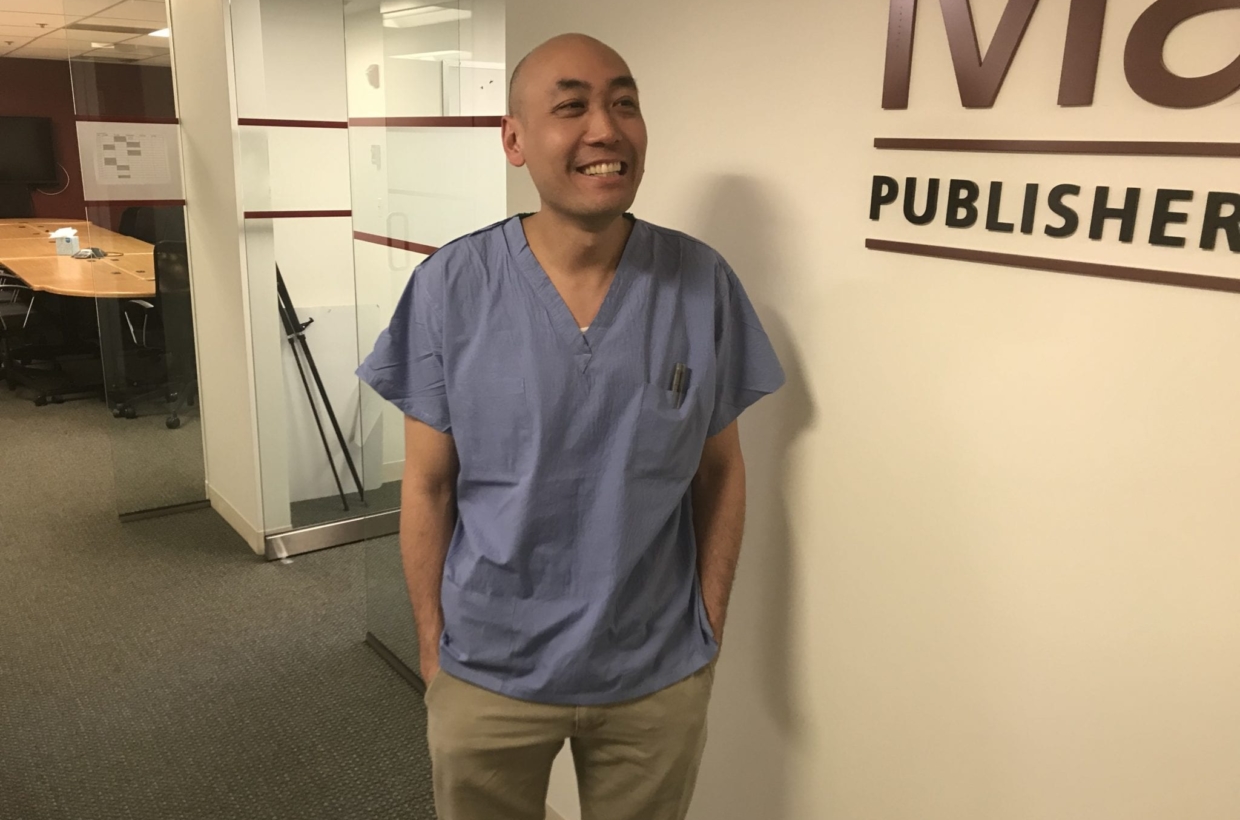At MGH, they worry about a second surge


This is the tenth conversation between Dr. Jarone Lee, a frontline critical care and emergency physician at Massachusetts General Hospital and associate professor at Harvard Medical School, and Dr. Paul Hattis, an associate professor at the Tufts University Medical School who participates in CommonWealth’s Health or Consequences Codcast. Find links for past conversations at the end of the story.
PAUL HATTIS: It looks like Massachusetts is about to start a phased reopening. From where you stand, does that make sense?
JARONE LEE: Our numbers have overall decreased but continue to be rather high. We still have 287 patients with confirmed or suspected COVID-19 and of these 96 are in the ICUs. This is still above and beyond our standard ICU capacity.
We continue to worry about a second surge for many reasons. First, we are past the peak and tired after two months of social isolation and COVID information overload. The economic and financial realities of shuttering down continue to worsen. Not to mention, the weather is getting nicer outside. All of this points to people relaxing social distancing at a point where we are winning the fight. In many ways, I think we are at a very dangerous point because if we relax too much and get sloppy, a second surge will hit and it could be worse than the first. I do believe that we have to re-open. This can be done scientifically and thoughtfully to keep us all safe. It will require hard work not just by our leaders and policy makers, but all of us. We need to be vigilant with social distancing, contact tracing, testing, and maintaining all the good public health practices.
HATTIS: How are you preparing for a second surge?
JARONE LEE: We plan for a second surge using the experience gained from the first. We now know more about how to rapidly open ICU capacity, as well as all the equipment, medications, and workforce required to make it all work and function well. We also learned much about specific needs of our COVID-19 patients. For example, certain ventilators were better for these patients than others. As such, we are looking to optimize our ventilator supply and associated tubing so that we will be ready for a second surge.
I also hope that collaboration continues between hospitals within the Mass General Brigham system and between systems that traditionally compete against each other. I hope the sharing of supplies, equipment, and ideas continues to build, even when we are not in a crisis mode. It just seems better for patient care and for healthcare planning generally. Our common late mentor, Bob Sigmond, taught us both that there must be a way to find that essential spirit of collaboration and the need to advance an altruistic health care mission, even in the midst of competitive market forces.
In that spirit, a group of us at MGH built a video-based, online, educational platform to help other hospitals and healthcare providers deal with their impending COVID-19 surge. It will be a regularly updated living website. Our vision is to have a range of educational materials and videos that will assist frontline staff at hospitals everywhere in their COVID care preparations. We hope to have this website up this week, or next week at the latest.
HATTIS: What do you think a phased reopening will look like at your hospital?
LEE: Now that we are passed the peak of the first COVID-19 surge, with overall COVID-19 inpatient volume decreasing, we are starting to see significant numbers of non-COVID patients with emergencies being admitted to our hospital and to our ICUs. Sadly, people were fearful to come to the hospital and so delayed their care. They are now arriving sicker, often leading to longer hospitalizations and need for ICU care. We are also starting to do procedures and surgeries that should not be delayed further, such as certain cancer removals. As expected, we also have a large backlog of elective surgeries that are still on hold, but it is expected that it will be both safe and appropriate in the near future for health care providers generally in our area to begin to offer such elective care.
HATTIS: What’s the procedure for patients coming into the hospital now?
LEE: All patients being admitted to MGH, and also any hospitals in our system, will be tested for COVID. At MGH, we are generally using rapid tests so we know usually within a few hours. This way we can ensure that patients will be bedded in the right units to avoid cross contamination. So if you need to come in to the hospital, you will be tested and then assigned an appropriate room, COVID or non-COVID. We also have rigorous protocols for cleaning and maintaining areas to be sure it is safe. We have learned a lot about this disease and how it spreads and does not spread over the last two to three months.
HATTIS: What happens to patients discharged from the hospital?
LE: Once a patient is ready to leave the hospital, many will need some form of post-acute care, such as rehab. If the patient is COVID positive, then they will go to a facility that is able to take them. This could be a place like Spaulding Rehab, Boston Hope (converted Boston Convention Center), or a few other specific nursing homes that have the ability to care for COVID-patients without increasing the risk to their other patients. For our non-COVID patients, they typically can go right back to the facility they came in from. Of course, we also have patients that can go home, and they would need to self-isolate for up to 10 days. Guidance on this isolation period continues to evolve. If their own residence is not a viable option, they can go to either a facility like the Quality Inn in Revere that is now a COVID Isolation Hotel.
HATTIS: I’ve been reading a lot about new drug trials. Anything promising?
LEE: There is a lot of news about new drug and treatment trials. Some of them are encouraging, but, overall, we still do not have enough data and results to know if any of these treatments have a true benefit in reducing serious illness and mortality. I worry about the harm of over-treating with drugs that have limited efficacy. The side-effects can be worse than the disease itself.
For remdesivir, we still have not seen the full study results and only the press release. The trial itself sounds like it was conducted in a thoughtful and reasonable way. They did not find a mortality benefit thus far, but instead found only a reduction in symptom duration. There are concerns from the scientific community that the trial endpoint was changed right before releasing the report. Hopefully this is not the drug company looking to find a benefit where there is none. Regardless, if there is a reduction of symptoms by days with minimal to no side-effects, this could potentially mean that patients treated would be less likely to progress to critical-illness and needing stay in an ICU.
Initially, MGH was one of only four sites to receive the drug. Many of the hard-hit hospitals, such as BMC, were not getting an allocation. I was amazed to see MGH work with the state to redistribute its allotment of remdesivir in an equitable way.
A new treatment with three different anti-virals was just published in Lancet last week. This study caused a good amount of chatter as it appears well designed and reported encouraging results. There is also good biologic basis for why it could work. The big issue to us about the study results is that they treated patients that were not very sick. None of the patients in the trial died and there were essentially no critically ill and ICU patients enrolled in the trial. Unfortunately, this does not help provide any information on how best to treat our most ill COVID-19 patients.
HATTIS: What do you make of reports about convalescent plasma?
LE: Lots of hope and not much evidence. I will say, I am hopeful, too. But remember that the best and only data published on using convalescent plasma to treat COVID-19 patients is a brief article in JAMA involving only five patients. A lot of research is ongoing so we will have to see the results before knowing if it actually works. Also remember that convalescent plasma is a blood product. In other words, it has all the same risks associated with getting a blood transfusion. These include bad allergic reactions and the rare, but significant, chance of getting infected with hepatitis and HIV. Additionally, we can also see direct lung injury from blood product transfusions, where the body’s immune system rejects the blood transfusion and causes the lungs to fill up with fluid. We call this transfusion-related acute lung injury or TRALI. So, if this happens to a sick COVID patient already with lung injury, this will be devastating.
HATTIS: Have many staff members at MGH become infected?
LEE: As front-line health care workers, we are all at risk and some of us will get sick—a few already have at our hospital. We all know of someone that this disease has affected, not just mildly but in a devastating way. For my ICU, I can tell you, thus far, we have not had any health care workers that have contracted COVID from working in the Blake 12 ICU. This shows that having adequate PPE is key and works. As long as we have adequate PPE, and are scrupulous in its proper use, we should be okay. I only hope this can be the situation for all other providers. I especially worry about long-term care facilities and personnel caring for elders and other vulnerable groups in the community.
HATTIS: What’s new on the family front?
LEE: Remote learning continues in our household. Our five-year-old does well some days with some sessions and other sessions are disasters. Because of his curiosity with technology, his Zoom classes sometimes degenerate to him playing with the camera, microphone, or background settings — typically all three. We have worked hard to get him to sit, listen, and not play with the Zoom functions. However, what we noticed is that other kids in his class are doing the same thing. We know it is not funny to the teachers, but when it is not our kid doing it, we see the humor in the situation—but also appreciate the challenge to the teacher in such trying educational circumstances.
Previous conversations with Dr. Lee:
The Codcast: A report from the frontlines at MGH
Q &A with MGH doc Jarone Lee: We’re seeing patients of all ages
Dr. Lee: Preparing for the surge
Dr. Lee: ICU units won’t beat this disease
Dr. Lee: At MGH patients don’t die alone
Surge still manageable for Dr. Lee
Dr. Lee: We’re busy but in good shape
Dr. Lee says COVID-19 patient counts down
I’m seeing promising ventilator death data
 Pathways Drug Rehabilitation Luxury Addiction Treatment & Detox Center
Pathways Drug Rehabilitation Luxury Addiction Treatment & Detox Center


